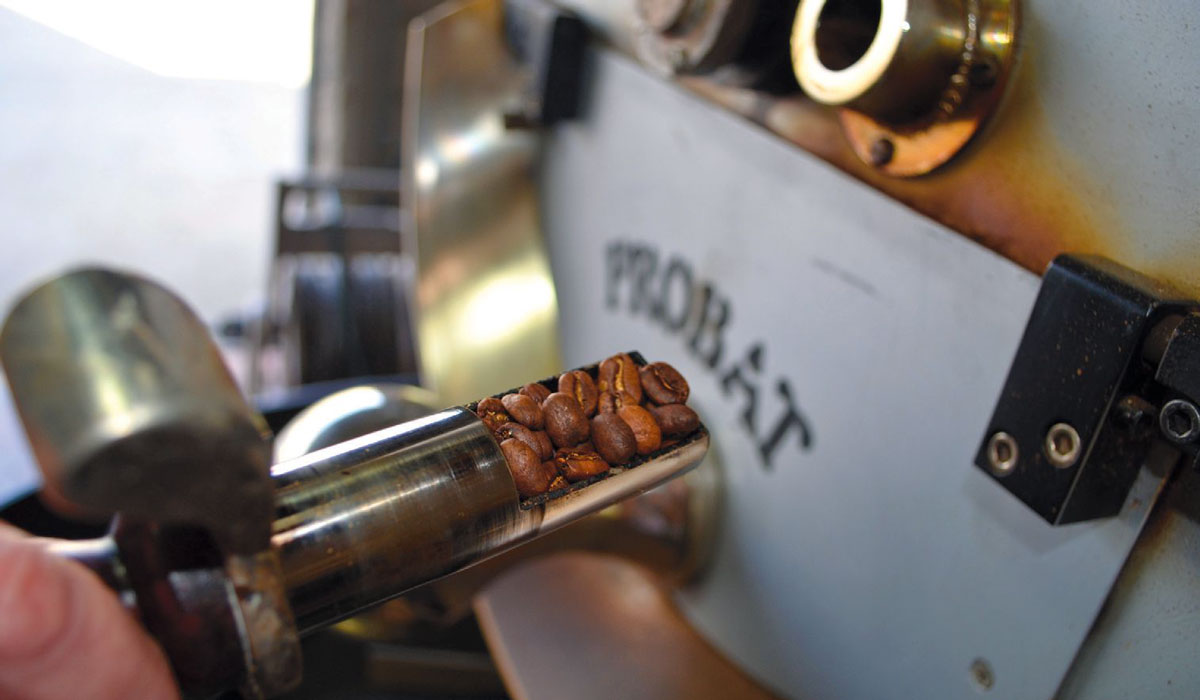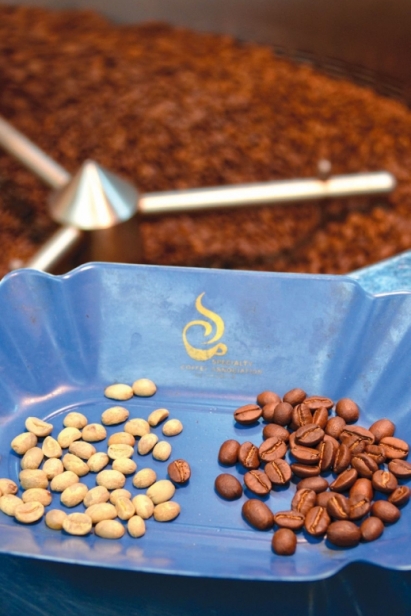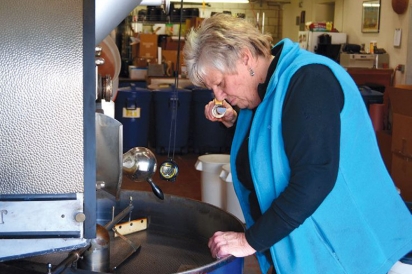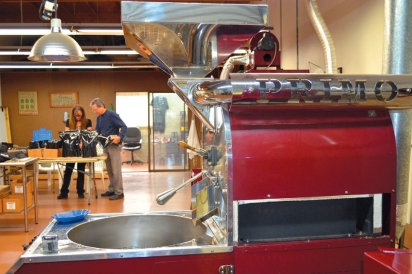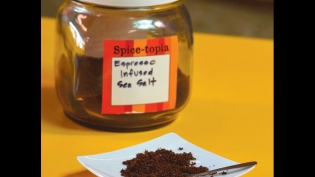Small-Batch Roasters Bring Coffee Magic To Ventura
Good coffee is like friendship: rich and warm and strong.
–Pan-American Coffee Bureau advertisement
Recent years have seen coffee take its place in the lineup of items foodies must have, for good reason: Coffee contains more than 800 organic elements that contribute to the cup quality, and it is two-and-a-half times more chemically complex than wine.
Like the wine grape, the coffee bean hails from humble origins, growing in warm climates in places like South America, Africa and even Hawaii. As with grapes, the best coffee beans are the product of good farming and a touch of artistry.
Coffee artisans themselves, springing up rather like the beans they roast, have also made their way to Ventura County. Gayla Moore owns Moore Coffee, Tea & Spices (MooreCoffee.com) and operates out of a slump-stone industrial space on the northwest end of Ventura. Over on the south side, Gregg and Cheryl Butler run Brazuka Coffee Roasters (BrazukaCoffee.com) in a similar facility. Both companies are products of the 2007 recession and both have owners who are passionate about what they do.
"It's really a farming process and it all starts with the bean," says Gayla. "Quality and consistency were and are the hallmark of the coffee brokers I work with. I was taught to roast by Lydia See, who learned to roast from the people at the French Laundry restaurant in Napa Valley. So I started sort of at the top of the heap and worked with the best beans I could find and learned to roast by taste."
Gayla started her café, See's Coffee, in 1990 on State Street in Santa Barbara. A professional photographer and artist, she was "lured away from the camera by the coffee bean." It was a cup of Sumatra that changed her life, she says. "I really wasn't a coffee drinker until Lydia made me that cup of Sumatra. It was love at first sip."
But the recession put an end to See's. Gayla parted ways with her business partner, packed up her roaster and brought it to Ventura. For Gayla, it was the beginning of what she calls her "love affair with coffee."
"It's not unlike photography, really. You're still using your senses to roast the beans to taste and you look for color as well as use your nose and, of course, your palate," Gayla says. She even got to work with Dan Phillips at the Grateful Palate, formerly of Ventura County, to make coffee blends that went with the wine Phillips imported. "It's one of the things I love about roasting coffee," says Gayla. "It's always something new, and I get to do something different every day."
Gayla works with several coffee brokers, all of whom import sustainable beans, to get beans from Central and South America, Indonesia and some African countries. She is certified by California Certified Organic Farmers to sell organic roasted and green coffee bean varieties, and believes in sustainable, eco-friendly farming practices.
"I try to find organic beans and I do that as much as possible, but what I focus on is whether or not the beans are sustainable," Gayla says. "Is the farmer treating his people well, does he work within the community and is the farmer working for a future? Those are the questions I ask."
Unlike Gayla, who has been in the coffee business for more than 20 years, the Butlers are relative newcomers. They purchased Brazuka Coffee Roasters' assets in 2009 from Marcello Rocha, who started the company after graduating from UC Santa Barbara and then decided to return home to Brazil.
While the coffee roasting company pays for itself, at night Gregg works at Smart & Final and Cheryl works at Chili's waiting tables.
At Brazuka, though, the couple enjoys working together. "To be honest, this doesn't feel like work. It's fun," says Cheryl.
Gregg learned the art of coffee roasting as a boy growing up in Hawaii and recently from noted coffee-roasting expert Willem Boot in Marin County. He annually roasts about 12,000 pounds of Brazuka coffee for restaurants, business offices and consumers.
Gregg is meticulous in his roasting process, constantly monitoring the beans and adjusting the roaster's temperature throughout the cycle. "You have to keep an eye on it because it can go too far and you lose the flavor quickly," says Cheryl.
So with timer nearby, and clipboard in hand, Gregg keeps thorough notes on each batch's particulars for future reference. He even tests a few beans by biting them in half to make sure they're evenly colored throughout.
"Our first priority is certified organic beans," says Cheryl, adding that Brazuka is certified as a 100% organic roaster by Ventura-based Organic Certifiers. The couple works with a few trusted importers to obtain beans from Central and South America, Africa and the Pacific. In addition to certified organic, the Butlers source green coffee beans that are Fair Trade, Rainforest Alliance and shade-grown.
READY, SET, ROAST
I tagged along as Gayla roasted a batch of coffee beans so that I could see firsthand how inedible, raw beans transform into the alluring dark brown grounds used in my morning jolt.
Raw beans are army green and look rather like oblong peas that have been shelled.
"It starts as a flower and then becomes a cherry," Gayla explains. "That gets picked and gets fermented in water and then washed and then they dry it, sometimes on the ground or in small baskets. That becomes a kind of mucilage. That leaves a kind of parchment cover, like a shell, on the bean and that has to get dried again and then separated or sorted," Gayla says.
The sorting process in Sumatra fascinated Gayla so much that she keeps a sorting basket in her office. "I saw how they did this by hand and I had to have one."
She puts the green beans into a roaster in small batches, anywhere between 10 and 25 pounds at a time, and roast for just a short time (about eight to 18 minutes, depending on the roast level).
"You can count on losing about 18% to 20% of what you roast to water [in the bean]. It just sort of evaporates," adds Gayla, pouring nine pounds of organic Guatemalan beans into her roaster. "I have a lot of respect for the science of roasting coffee, but I know very little about it. For me it's an art."
Gayla's coffee roaster, a German model nicknamed "Helga" by Gayla's former Santa Barbara crew, resembles a giant blender without the paddles. She stands a little over six feet tall and about three feet wide.
When Gayla and Helga work together, there's a kind of dance, a give and take symbiosis. Helga twirls the beans around in the cylinder roaster and heats up, while Gayla concentrates on the subtleties of each stage of the bean's metamorphosis.
Once the beans are in the roaster, she pulls out a stopwatch. The roaster's interior temperature moves between 400° and 450°. "It's like a convection oven and it's about controlling temperature and time." Beans twirl about in a cylinder and Gayla uses a scoop to take small samples to watch and smell the changes taking place.
Within a minute, smells of bread and even light citrus fruits arise and the beans become caramelized. The beans have moved from green to tan and are heading toward brown. The beans then make a "cracking" sound, signaling that the process is winding down. As the beans get darker, the master roaster decides when to stop the process, which will determine the darkness of the roast.
Once the "first crack" occurs, the beans are at the City roast stage, the lightest roast level that will produce a decent cup of Joe. The next stage is City+ roast, which has more caramelization and the beans are medium brown. Beans at the second audible crack are called Vienna roast; those near the end of second crack are the dark-brown beans of French roast.
Coffee "wakes up your senses and it's so inviting," says Gayla. I couldn't agree more.


